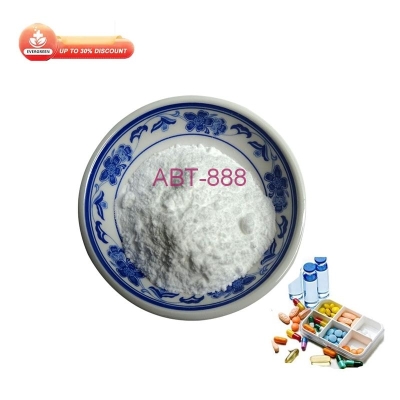-
Categories
-
Pharmaceutical Intermediates
-
Active Pharmaceutical Ingredients
-
Food Additives
- Industrial Coatings
- Agrochemicals
- Dyes and Pigments
- Surfactant
- Flavors and Fragrances
- Chemical Reagents
- Catalyst and Auxiliary
- Natural Products
- Inorganic Chemistry
-
Organic Chemistry
-
Biochemical Engineering
- Analytical Chemistry
- Cosmetic Ingredient
-
Pharmaceutical Intermediates
Promotion
ECHEMI Mall
Wholesale
Weekly Price
Exhibition
News
-
Trade Service
Atomoxetine Related Compound C, also known as N-methyl-3-phenyl-3-(p-tolyl-oxy)propan-1-amine hydrochloride, is a synthetic chemical compound that has been studied for its potential therapeutic effects in various medical conditions.
It is classified as a selective norepinephrine reuptake inhibitor (SNRI), which means it works by increasing the levels of norepinephrine, a neurotransmitter that plays an important role in the regulation of mood, attention, and blood pressure.
While Atomoxetine Related Compound C has been shown to have some potential benefits, it is important to note that it is not currently approved for use in any medical treatment.
The chemical has been studied for its potential use in the treatment of conditions such as attention-deficit/hyperactivity disorder (ADHD), but more research is needed before it can be considered safe and effective for this or any other medical condition.
In terms of safety, Atomoxetine Related Compound C has been studied in animal models and in human clinical trials.
While some studies have suggested that it may have potential benefits in certain medical conditions, others have raised concerns about its safety and potential side effects.
One of the most common side effects associated with Atomoxetine Related Compound C is hypertension, or high blood pressure.
In some studies, a small percentage of patients experienced significant increases in blood pressure while taking the drug.
This is a concern, as uncontrolled high blood pressure can lead to serious health problems such as heart attack, stroke, and kidney disease.
Another potential side effect of Atomoxetine Related Compound C is the risk of serious bleeding.
Like other SNRI medications, this chemical has been associated with an increased risk of bleeding, particularly in the central nervous system.
This can lead to serious complications, including stroke, and in rare cases, death.
Other potential side effects of Atomoxetine Related Compound C include dizziness, headache, agitation, anxiety, and insomnia.
While these side effects are generally considered mild, they can have a significant impact on a patient's quality of life, particularly if they persist over time.
One of the most concerning potential side effects of Atomoxetine Related Compound C is its potential for addiction and abuse.
Some studies have suggested that the drug may produce feelings of euphoria and well-being, which can lead to addiction and substance abuse.
This is a concern, as substance abuse can have serious consequences for an individual's physical and mental health.
In addition to these potential side effects, it is important to note that Atomoxetine Related Compound C has not been adequately studied in humans, and more research is needed to fully understand its safety and efficacy.
While some studies have suggested that it may have potential benefits in certain medical conditions, others have raised concerns about its safety and potential risks.
In conclusion, Atomoxetine Related Compound C is a synthetic chemical compound that has been studied for its potential therapeutic effects in various medical conditions.
While it has some potential benefits, it is important to note that it is not currently approved for use in any medical treatment.
The chemical has been studied in animal models and in human clinical trials, and some studies have suggested that it may have potential benefits in certain medical conditions.
However, others have raised concerns about its safety and potential side effects, particularly in terms of hypertension, bleeding, addiction, and substance abuse.
It is important to note that more research is needed to fully understand the safety and efficacy of Atomoxetine Related Compound C before it can be considered safe and effective for any medical condition.







